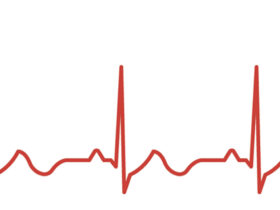 For people with end-stage renal disease (ESRD) or kidney failure, dialysis is a life-sustaining treatment that filters wastes, salts, and fluids from the blood when the kidneys can no longer perform this function adequately. To receive dialysis, surgery is required to create an access point into the blood vessels that allows the frequent blood circulation necessary for dialysis. This access point, called the dialysis access, is one of the most important aspects of dialysis care.
For people with end-stage renal disease (ESRD) or kidney failure, dialysis is a life-sustaining treatment that filters wastes, salts, and fluids from the blood when the kidneys can no longer perform this function adequately. To receive dialysis, surgery is required to create an access point into the blood vessels that allows the frequent blood circulation necessary for dialysis. This access point, called the dialysis access, is one of the most important aspects of dialysis care.
There are three main types of dialysis access:
1. Arteriovenous (AV) Fistula
2. Arteriovenous (AV) Graft
3. Venous Catheter
The AV fistula is considered the preferred access for most hemodialysis patients because it provides adequate blood flow for dialysis, lasts longer, and has fewer complications like infections and clots compared to other access types.
Creating an AV Fistula
An AV fistula is created by connecting an artery to a vein, usually in the arm, during outpatient surgery using local anesthesia. This allows the vein to receive increased blood flow from the artery, causing it to grow larger and stronger – a process called “maturation” that typically takes several weeks or months. Once matured, two needles can be inserted into the enlarged vein during dialysis sessions to allow blood flow out of the body, filtering by the dialysis machine, and then return to the body.
If the vein is unsuitable for an AV fistula, an AV graft may be used instead. This involves implanting a synthetic tube to join an artery and vein together.
Catheters, while allowing more immediate dialysis access, are meant for temporary use as they have higher risks of infection and clotting compared to fistulas and grafts.
Pre-Surgery Evaluation
Prior to dialysis access surgery, vascular mapping tests like ultrasound are done to evaluate which veins and arteries would be best for creating the access. This exam looks at blood vessel size, location, any blockages or narrowing, and direction of blood flow. The non-dominant arm is usually preferred for creating the access to preserve mobility in the dominant arm.
Surgery Risks and Recovery
As with any surgical procedure, dialysis access surgery carries risks like bleeding, infection, poor wound healing, steal syndrome (disruptive blood flow diversion), and potential future access failure requiring additional procedures. Temporary swelling, bruising and discomfort around the access site is normal after surgery.
Post-surgery recovery involves carefully monitoring the access for maturation while avoiding prolonged bleeding, arm elevation to decrease swelling, and protecting the area from trauma that could disrupt the new access. Patients are shown how to check for an adequate blood flow “pulse” in the access.
Ongoing Access Monitoring and Care
Once a successful dialysis access is established and healed, proper access monitoring and care becomes crucial, including:
. Checking the access thrill or vibration daily for adequate blood flow
. Keeping the access area clean and avoiding trauma
. Exercising the access arm and avoiding pressure on that area
. Managing any stenosis or clotting issues promptly
. Not allowing any injections, IVs or blood pressure monitoring on the access arm
With proper surgery, monitoring and care, a well-functioning AV fistula dialysis access can last many years. Having this vital vascular access created is one of the key steps in preparing for successful, ongoing dialysis treatment for ESRD patients.
Vascular and Vein Center at Gulfcoast Surgeons has been one of the most respected vein clinics in Southwest Florida for over 30 years. Our surgeons, Dr. Abraham Sadighi, Dr. Johan Escribano, and Dr. Vijayakumar Tanjavur have performed thousands of vascular and vein surgeries with consistently positive outcomes.
We focus on diseases of the vascular system that can range from harmless but unattractive spider veins to dangerous conditions such as peripheral artery disease. Our caring and dedicated team will help you identify problems and offer the best treatment options for you.
Vascular & Vein Center of Gulfcoast Surgeons
877-LEG-PAIN
gulfcoastsurgeons.com
Fort Myers
8010 Summerlin Lakes Dr., Ste. 100
Fort Myers, FL 33907
Bonita Springs
24301 Walden Center Dr., Ste. 102
Bonita Springs, FL 34134
Cape Coral
1003 Del Prado Blvd., Ste. 303
Cape Coral, FL 33990









